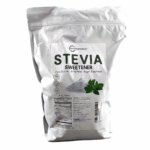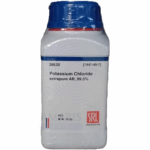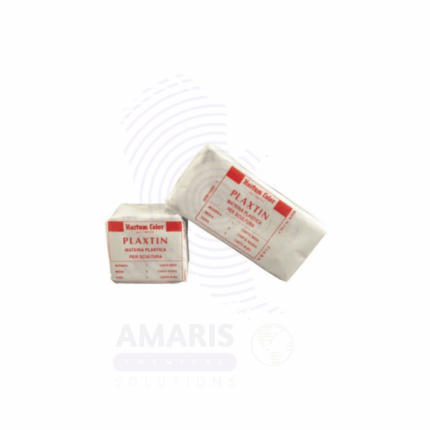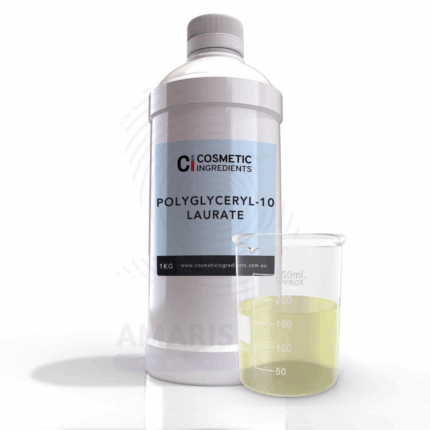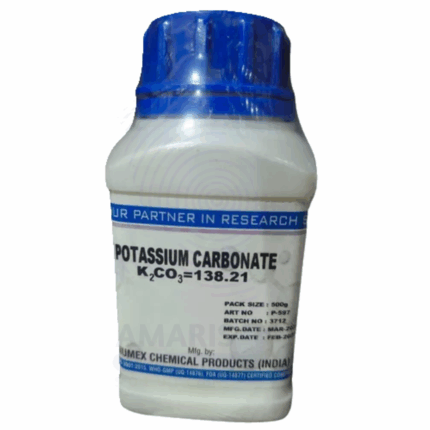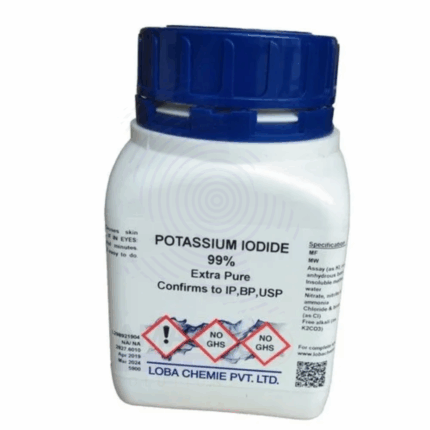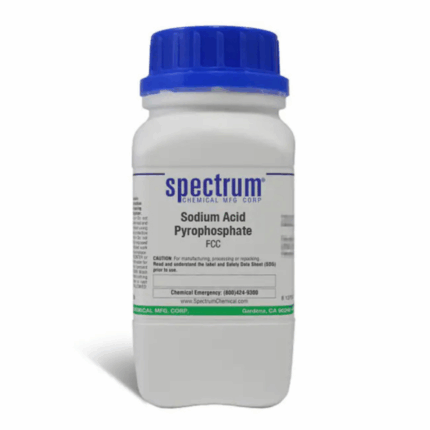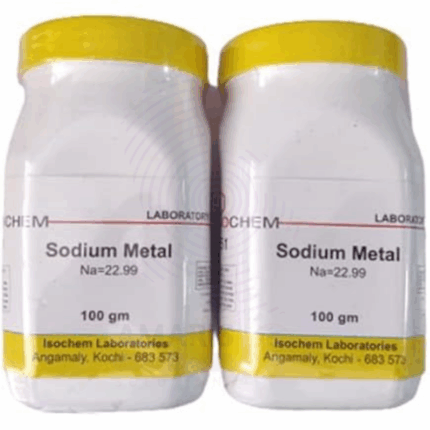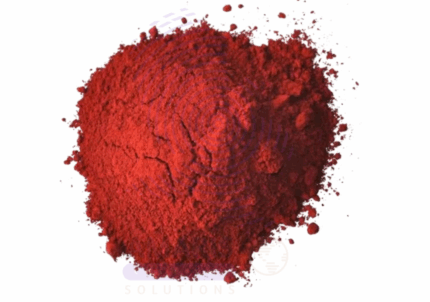Bitumen Primer Extra Pure
Bitumen Primer Extra Pure is a high-purity, low-viscosity liquid used in laboratory and industrial research involving adhesion studies, waterproofing technologies, and material compatibility testing. It consists primarily of refined bitumen dissolved in a suitable solvent, allowing it to penetrate and seal porous substrates like concrete, masonry, or metal. In laboratory contexts, it is used to study the behavior of protective coatings, surface treatments, and corrosion resistance. The extra pure grade ensures minimal impurities and uniform consistency, supporting accurate and reproducible test results. Bitumen Primer should be stored in a tightly closed container in a well-ventilated area, away from heat sources, sparks, and open flames
Bitumen Primer Extra Pure
Primary Uses
- Material Adhesion Testing
- Used in laboratory tests of bonding strength between bituminous layers and various substrates (e.g., concrete, metal, glass) for civil or materials engineering studies.
- Formulation Studies
- Serves as a base compound in lab-scale modification experiments (e.g., adding polymers, resins, or solvents to study effects on drying time, viscosity, and adhesion).
- Analytical Characterization
- Investigated using techniques like GC-MS, FTIR, or TGA to analyze composition, volatility, and thermal behavior of bituminous coatings.
- Waterproofing Material Simulation
- Used in small-scale simulations of waterproofing systems, helping researchers study moisture barriers and coating performance under controlled conditions.
Secondary Uses
- Educational Demonstrations
- Used in civil engineering or construction chemistry labs to demonstrate priming methods, penetration properties, and setting behavior.
- Corrosion Protection Studies
- Tested as a corrosion-resistant primer in metal exposure experiments, particularly under salt spray or humid environments.
- Comparative Coating Performance Research
- Used alongside synthetic and eco-friendly alternatives in studies comparing environmental impact and durability.
- Binder Compatibility Studies
- Investigated for interaction with asphalt, aggregates, and additives in binder blend compatibility testing.
| PACK SIZE |
25 grams Plastic Tin |
|---|
1. Basic Identification Attributes
- Product Name: Bitumen Primer Extra Pure
- General Description: A high-purity, solvent-based bituminous primer designed for adhesion promotion in waterproofing tests, material compatibility studies, and sample preparations in lab settings.
- CAS Number: Mixture (primary components include Bitumen [CAS: 8052-42-4] + hydrocarbon solvents)
- HS Code: 2715.00.00 (Bituminous mixtures)
- Grade: Extra Pure (suitable for controlled lab applications)
- Composition:
- Refined bitumen (asphalt)
- Solvents like mineral spirits, naphtha, or toluene
2. Physical & Chemical Properties
- Physical State: Liquid
- Appearance: Dark brown to black viscous liquid
- Odor: Strong petroleum-like odor
- Boiling Point: 120–200 °C (depending on solvent blend)
- Flash Point: ~35–45 °C (flammable)
- Density: ~0.90–1.05 g/cm³
- Solubility:
- Water: Insoluble
- Organic solvents: Soluble in aliphatic and aromatic hydrocarbons
- Viscosity: Medium to high
- Vapor Pressure: Moderate (due to solvent content)
3. Safety & Hazard Attributes
- GHS Classification:
- Flammable Liquid (Category 3)
- Skin Irritant (Category 2)
- Specific Target Organ Toxicity – Single Exposure (Category 3)
- GHS Pictograms:
⚠️ 🔥 - NFPA Ratings:
- Health: 2
- Flammability: 3
- Reactivity: 0
- Primary Hazards in Lab:
- Flammable vapors
- Skin/eye irritation
- Inhalation hazard from fumes
- Personal Protective Equipment (PPE):
- Nitrile gloves, safety goggles, lab coat
- Use in fume hood when heated or sprayed
4. Storage & Handling Attributes
- Storage Conditions:
- Store in flammable chemical cabinet
- Keep container tightly closed
- Protect from heat, sparks, open flame
- Incompatible Materials:
- Oxidizing agents, strong acids, alkalis
- Container Type:
- Metal or solvent-resistant plastic with sealed lid
- Shelf Life:
- Up to 2 years under proper storage
- Handling Notes (Lab):
- Mix thoroughly before use
- Avoid skin contact and fume inhalation
5. Regulatory & Compliance Attributes
- Regulatory Status:
- Regulated for flammability and VOC content
- Not classified as carcinogenic in pure lab-grade form, but prolonged exposure may carry risk (depending on bitumen refinement)
- Transportation Restrictions:
- UN 1999, Class 3 (Flammable liquid, n.o.s.)
- Must follow DG transport guidelines
- Disposal Method:
- Hazardous waste – collect and dispose of per local environmental regulations
6. Environmental & Health Impact
- Ecotoxicity: Harmful to aquatic life (due to hydrocarbon solvents)
- Persistence: Bitumen components are persistent in the environment
- Bioaccumulation: Low to moderate depending on solvent type
Carcinogenicity: Potential concern only if polycyclic aromatic hydrocarbons (PAHs) are present — not typical in extra pure lab grade
SAFETY PRECAUTIONS
- Personal Protective Equipment (PPE):
- Wear chemical-resistant gloves, lab coat, and safety goggles.
- Use respiratory protection if adequate ventilation is not ensured.
- Handling:
- Handle in a well-ventilated fume hood due to the presence of volatile organic solvents.
- Avoid inhalation, skin contact, and eye exposure.
- Keep away from sparks, flames, and heat sources – product is highly flammable.
- Storage:
- Store in a cool, well-ventilated area, away from direct sunlight and ignition sources.
- Keep the container tightly closed when not in use.
- Ground/bond container and receiving equipment to prevent static discharge.
- Hygiene Measures:
- Wash thoroughly after handling.
- Do not eat, drink, or smoke in areas where the product is used or stored.
FIRST AID MEASURES
- Inhalation:
- Remove the victim to fresh air.
- If breathing is difficult, administer oxygen.
- Seek immediate medical attention.
- Skin Contact:
- Wash with soap and water.
- Remove contaminated clothing.
- Seek medical attention for irritation or burns.
- Eye Contact:
- Flush immediately with plenty of water for at least 15 minutes.
- Hold eyelids open during flushing.
- Seek medical help promptly.
- Ingestion:
- Do not induce vomiting (may cause aspiration into lungs).
- Rinse your mouth if conscious.
- Get immediate medical assistance.
FIRE FIGHTING MEASURES
- Extinguishing Media:
- Use foam, dry chemical powder, carbon dioxide (CO₂).
- Do not use water jets (can spread the fire).
- Fire Hazards:
- Highly flammable — vapors may form explosive mixtures with air.
- Combustion releases toxic fumes: carbon monoxide, carbon dioxide, and smoke.
- Protective Equipment for Firefighters:
- Wear self-contained breathing apparatus (SCBA).
- Use full protective firefighting gear.
- Explosion Risk:
- Vapors can travel along surfaces to a distant ignition source.
- Ensure proper grounding during transfer operations.


 Preservatives(food)
Preservatives(food) Flavor Enhancers
Flavor Enhancers Acidulants
Acidulants Sweeteners
Sweeteners Antioxidants
Antioxidants Colorants(food)
Colorants(food) Nutraceutical Ingredients (food)
Nutraceutical Ingredients (food) Nutrient Supplements
Nutrient Supplements Emulsifiers
Emulsifiers
 Collectors
Collectors Dust Suppressants
Dust Suppressants Explosives and Blasting Agents
Explosives and Blasting Agents Flocculants and Coagulants
Flocculants and Coagulants Frothers
Frothers Leaching Agents
Leaching Agents pH Modifiers
pH Modifiers Precious Metal Extraction Agents
Precious Metal Extraction Agents
 Antioxidants(plastic)
Antioxidants(plastic) Colorants (Pigments, Dyes)
Colorants (Pigments, Dyes) Fillers and Reinforcements
Fillers and Reinforcements Flame Retardants
Flame Retardants Monomers
Monomers Plasticizers
Plasticizers Polymerization Initiators
Polymerization Initiators Stabilizers (UV, Heat)
Stabilizers (UV, Heat)
 Antifoaming Agents
Antifoaming Agents Chelating Agents
Chelating Agents Coagulants and Flocculants
Coagulants and Flocculants Corrosion Inhibitors
Corrosion Inhibitors Disinfectants and Biocides
Disinfectants and Biocides Oxidizing Agents
Oxidizing Agents pH Adjusters
pH Adjusters Scale Inhibitors( water)
Scale Inhibitors( water)
 Antioxidants(cosmetic)
Antioxidants(cosmetic) Emollients
Emollients Fragrances and Essential Oils
Fragrances and Essential Oils Humectants
Humectants Preservatives
Preservatives Surfactants(cosmetic)
Surfactants(cosmetic) Thickeners
Thickeners UV Filters
UV Filters
 Fertilizers
Fertilizers Soil Conditioners
Soil Conditioners Plant Growth Regulators
Plant Growth Regulators Animal Feed Additives
Animal Feed Additives Biostimulants
Biostimulants Pesticides (Herbicides, Insecticides, Fungicides)
Pesticides (Herbicides, Insecticides, Fungicides)
 Active Pharmaceutical Ingredients (APIs)
Active Pharmaceutical Ingredients (APIs) Excipients
Excipients Solvents(pharmaceutical)
Solvents(pharmaceutical) Antibiotics
Antibiotics Antiseptics and Disinfectants
Antiseptics and Disinfectants Vaccine Adjuvants
Vaccine Adjuvants Nutraceutical Ingredients (pharmaceutical)
Nutraceutical Ingredients (pharmaceutical) Analgesics & Antipyretics
Analgesics & Antipyretics
 Analytical Reagents
Analytical Reagents Solvents(lab)
Solvents(lab) Chromatography Chemicals
Chromatography Chemicals Spectroscopy Reagents
Spectroscopy Reagents microbiology-and-cell-culture-reagents
microbiology-and-cell-culture-reagents Molecular Biology Reagents
Molecular Biology Reagents Biochemical Reagents
Biochemical Reagents Inorganic and Organic Standards
Inorganic and Organic Standards Laboratory Safety Chemicals
Laboratory Safety Chemicals Specialty Laboratory Chemicals(Special Laboratory Equipment)
Specialty Laboratory Chemicals(Special Laboratory Equipment)
 Demulsifiers
Demulsifiers Hydraulic Fracturing Fluids
Hydraulic Fracturing Fluids Scale Inhibitors(oil)
Scale Inhibitors(oil) Surfactants(oil)
Surfactants(oil) Drilling Fluids
Drilling Fluids
 Dyes and Pigments
Dyes and Pigments Bleaching Agents
Bleaching Agents Softening Agents
Softening Agents Finishing Agents
Finishing Agents Antistatic Agents
Antistatic Agents
 Admixtures
Admixtures Waterproofing Agents
Waterproofing Agents Sealants and Adhesives
Sealants and Adhesives Curing Compounds
Curing Compounds Concrete Repair Chemicals
Concrete Repair Chemicals Anti-Corrosion Coatings
Anti-Corrosion Coatings
 Surfactants(cleaning)
Surfactants(cleaning) Builders
Builders Enzymes
Enzymes Solvents (Cleaning)
Solvents (Cleaning) Fragrances
Fragrances
 Electronic Chemicals
Electronic Chemicals Catalysts
Catalysts Lubricants
Lubricants Photographic Chemicals
Photographic Chemicals Refrigerants
Refrigerants Automotive chemicals
Automotive chemicals Pyrotechnic Chemicals
Pyrotechnic Chemicals
 Biodegradable Surfactants
Biodegradable Surfactants Bio-based Solvents
Bio-based Solvents Renewable Polymers
Renewable Polymers Carbon Capture Chemicals
Carbon Capture Chemicals Wastewater Treatment Chemicals
Wastewater Treatment Chemicals
 Pigments
Pigments Solvents(paint)
Solvents(paint) Specialty Coatings
Specialty Coatings Binders/Resins
Binders/Resins Additives
Additives Driers
Driers Anti-Corrosion Agents
Anti-Corrosion Agents Functional Coatings
Functional Coatings Application-Specific Coatings
Application-Specific Coatings
 Fresh Herbs
Fresh Herbs Ground Spices
Ground Spices Whole Spices
Whole Spices Spice Blends
Spice Blends Dried Herbs
Dried Herbs
 Leavening Agents
Leavening Agents Dough Conditioners
Dough Conditioners Flour Treatments
Flour Treatments Fat Replacers
Fat Replacers Decoratives
Decoratives Preservatives(baking)
Preservatives(baking)
 Plasticizers & Softeners
Plasticizers & Softeners Reinforcing Agents
Reinforcing Agents Adhesion Promoters
Adhesion Promoters Vulcanizing Agents
Vulcanizing Agents Antidegradants
Antidegradants Blowing Agents
Blowing Agents Fillers & Extenders
Fillers & Extenders Accelerators & Retarders
Accelerators & Retarders
